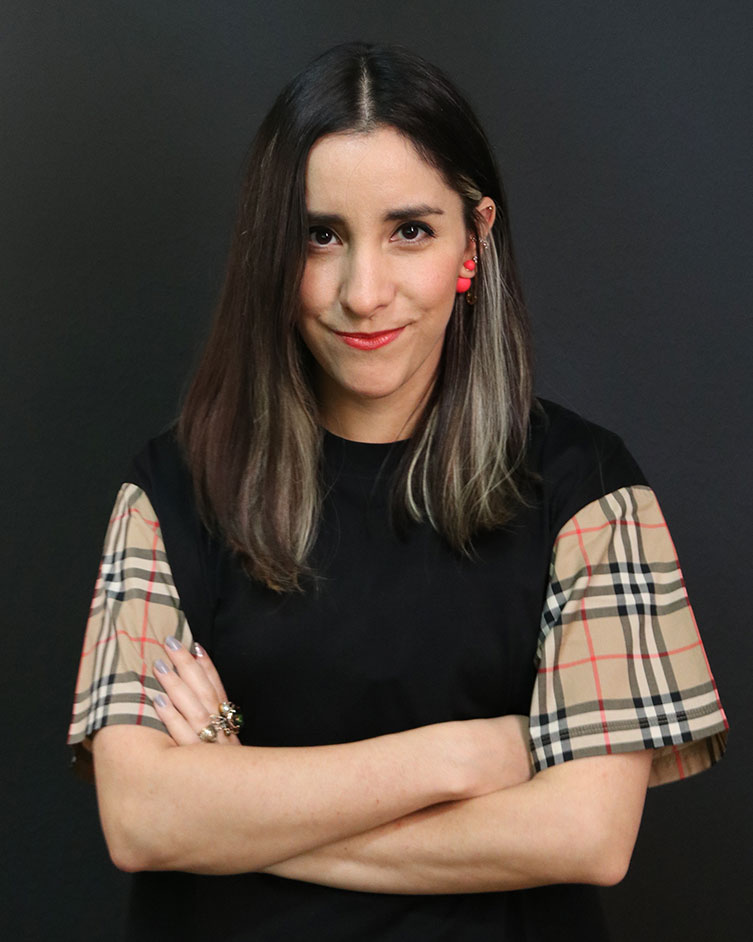The Proud Coog Amassed Online Following of 140K
With more than 75K subscribers on YouTube and 65.6K followers on Instagram, computer science alumna Estefannie brings her electronic projects, coding, programming and skits to a diverse following.

The online creator, who goes by only her first name publicly, graduated summa cum laude with a Bachelor of Science in computer science and a minor in mathematics from the University of Houston in 2014.
She is originally from Guadalajara, Mexico, but moved to Houston to pursue an education after she toured UH with her cousins when they attended several years ago.
“I thought, ‘I want to go here when I grow up!’” Estefannie said. “Many years later, after a lot of paperwork, student visas, and loans, I finally made it. I knew for a long time that I wanted to go here.”
As an undergraduate, she conducted research in professor of computer science and department chair Shishir Shah’s lab. The experience not only prepared her for her career as a software engineer but also to create YouTube electronics projects.
“I was prepared because there are a lot of software engineers that did not study computer science,” she said. “They can program, but they don’t know software design, software design principals and algorithm analysis – all the stuff I was taught at UH.”
“There are a lot of software engineers that did not study computer science. They can program, but they don’t know software design, software design principals and algorithm analysis.”
YouTube Videos to Test Her Knowledge
While working at her full-time job, she started making YouTube videos in 2016. It began out of necessity.
She had an upcoming technical interview, and she wanted to verify whether she actually understood the material. So, she decided to make a video explaining the information and upload it to the scariest place she knew – YouTube.
“I thought, if I say something wrong, people will call me out immediately. That’s why I started doing tutorials.”
She then began building projects like a pumpkin droid (her first build), a 3D-printed Daft Punk helmet and automated French press, in addition to computer science tutorials and how to create your own Instagram filters.
In 2019, due to her success on YouTube, she quit her job and pursued online creation full-time.
“I realized I couldn’t do both at the same time anymore. YouTube was starting to feel like it could grow more, become an actual business,” she said. “But I was my own bottleneck, because I was working really hard at my full-time job. I had to make a decision, and it was a gamble. I didn’t know what was going to happen, but I went for it and quit.”
The risk paid off, because she now works with major corporations who sponsor her content, which turned her hobby into a business.
In addition to YouTube, she now gives away products like mini-computers, microcontrollers and electronics kits on Instagram live streams, and she interviews other tech creators.
Inspiring Future Scientists with Computer Science and Mathematics Education
Reflecting on her time at UH, she says she misses conversations and classes with peers, such as her automata class she took one summer.
“My fondest memory was when the whole classroom would be in the lab studying together before the test. It was so much fun. It was like a party. It sounds so nerdy, but it was like an automata party.”
Estefannie is also a proponent of a strong mathematics education for people who want to have a thorough understanding of programming.
“If you focus on the how-to and not the why, you are training as a technician not an engineer.”
In a video, she tells her viewers, “Math is in the core of computer science. However, you don’t need a significant knowledge of math to learn how to program. But if you focus on the how-to and not the why, you are training as a technician not an engineer. There’s a difference between recreating a series of steps to code and actually designing solutions to complex problems.”

At UH, Estefannie also founded CS Girls, a computer science club for women “that focuses on supporting women and their impact in the technology field through workshops, networking events and tech talks.”
"It was my second year at UH, and I realized that I would see a lot of women in my classes, but I wouldn’t see them in the lab when I would study,” Estefannie said.
With her online content, she hopes her videos invigorate future generations of computer scientists.
“Growing up, I didn’t know any engineers or scientists in my direct family, definitely not women either,” she said. “I want to make computer programming and electronics as mainstream as possible. Kind of like baking. I think it would be so cool if little girls and boys out there could make cookies with their parents but could also make a robotic cake with accessible electronics!
I really hope I get to inspire a new generation of computer scientists.”
Subscribe to Estefannie’s YouTube channel here. Follow her on Instagram @estefanniegg.
- Rebeca Trejo, College of Natural Sciences and Mathematics